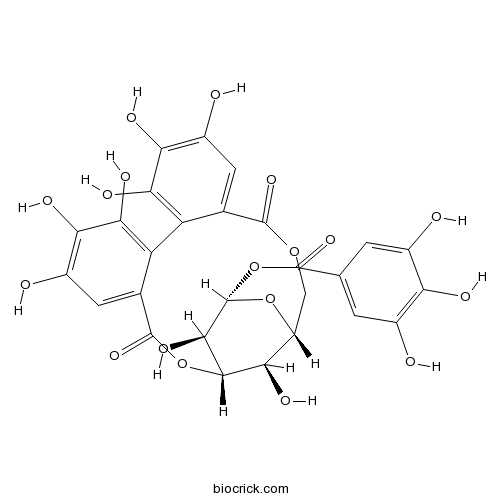Phyllanthus niruri
Phyllanthus niruri
1. The products in our compound library are selected from thousands of unique natural products; 2. It has the characteristics of diverse structure, diverse sources and wide coverage of activities; 3. Provide information on the activity of products from major journals, patents and research reports around the world, providing theoretical direction and research basis for further research and screening; 4. Free combination according to the type, source, target and disease of natural product; 5. The compound powder is placed in a covered tube and then discharged into a 10 x 10 cryostat; 6. Transport in ice pack or dry ice pack. Please store it at -20 °C as soon as possible after receiving the product, and use it as soon as possible after opening.
Natural products/compounds from Phyllanthus niruri
- Cat.No. Product Name CAS Number COA
-
BCN2322
Corilagin23094-69-1
Instructions

Adipocytokine Regulation and Antiangiogenic Activity Underlie the Molecular Mechanisms of Therapeutic Effects of Phyllanthus niruri against Non-Alcoholic Fatty Liver Disease.[Pubmed: 30096951]
None
Contamination of soil and the medicinal plant Phyllanthus niruri Linn. with cadmium in ceramic industrial areas.[Pubmed: 29680902]
Phyllanthus niruri is a plant that is used to prevent calcium oxalate crystallisation and to block the stone formation in urolithiasis. Contaminants in the environment can be readily taken up by medicinal plants due to their ability to absorb chemicals into their tissues. If contaminated plants are ingested, they have the potential to negatively affect human and environmental health. The aim of this study was to assess contamination in the soil and the medicinal plant P. niruri by cadmium (Cd) in ceramic industrial areas of Monte Carmelo, Brazil. Soil samples and plant samples (divided in root, shoot and leaves) were collected from a contaminated monitoring site and from a rural area (which was used as a reference site for comparative purposes). The Cd concentrations of the samples were analysed with an atomic absorption spectrometer. P. niruri was found to be sensitive to soil contamination by Cd that was attributed to ceramic industrial emissions. The results revealed that Cd bioaccumulation in the roots and shoots of P. niruri was associated with a significant increase (p < 0.05) in the concentration of active lignan compounds (phyllanthin and hypophyllanthin) in the leaves. The identification of high concentrations of Cd and active lignan compounds suggests a risk of contamination of the site and the risk of a high dose of Cd to people exposed at the site.
Effect of phyllanthus niruri on metabolic parameters of patients with kidney stone: a perspective for disease prevention.[Pubmed: 29617079]
Phyllanthus niruri (P.niruri) or stone breaker is a plant commonly used to reduce stone risk, however, clinical studies on this issue are lacking.
Proanthocyanidin Characterization, Antioxidant and Cytotoxic Activities of Three Plants Commonly Used in Traditional Medicine in Costa Rica: Petiveria alliaceae L., Phyllanthus niruri L. and Senna reticulata Willd.[Pubmed: 29048336]
None
Investigation of antidiabetic potential of Phyllanthus niruri L. using assays for α-glucosidase, muscle glucose transport, liver glucose production, and adipogenesis.[Pubmed: 28928090]
None


